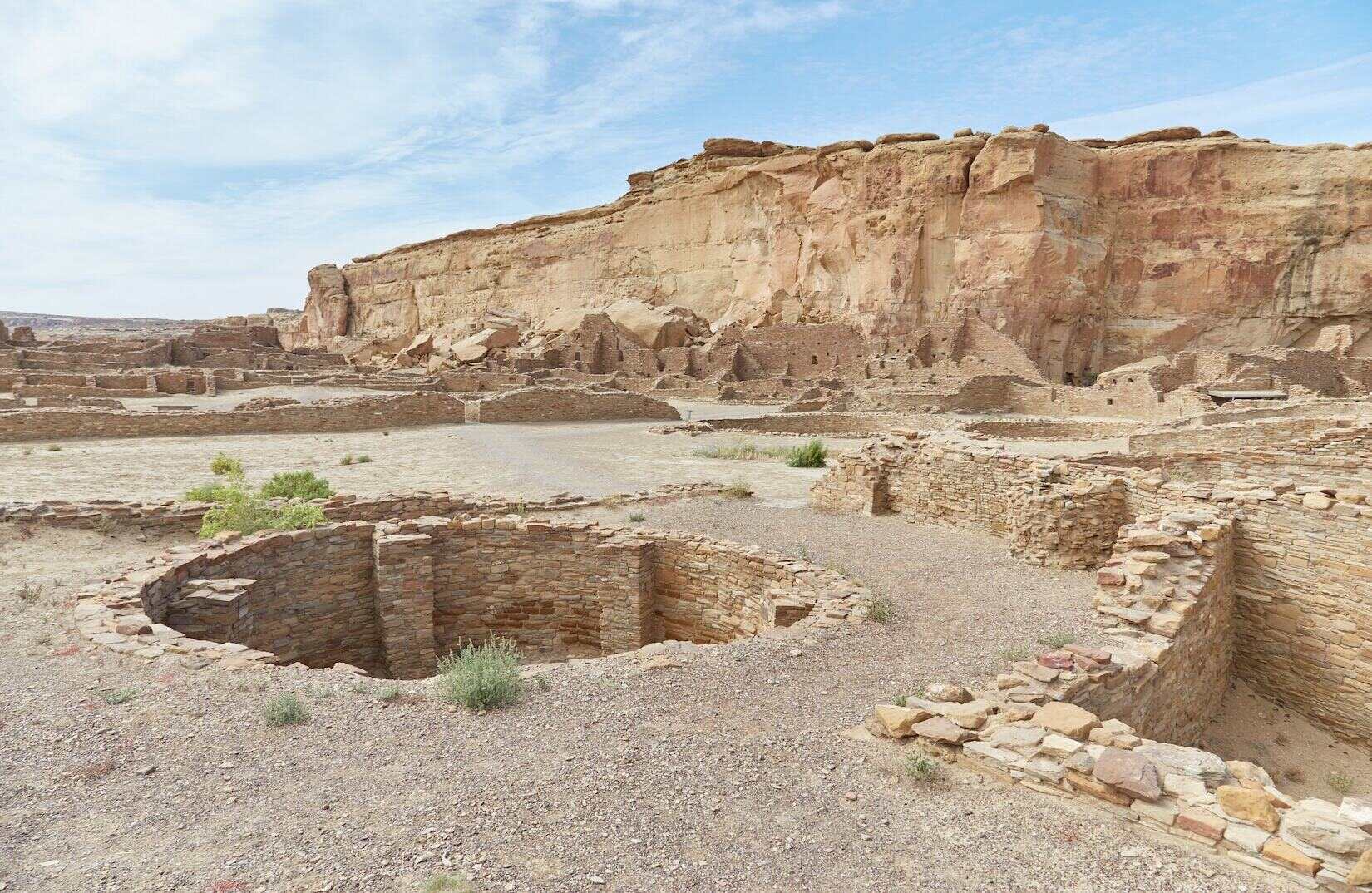Mysteries Of Chaco Culture Ruins

Have you ever wondered about the ancient civilizations that once thrived in North America? The Chaco Culture Ruins in New Mexico offer a glimpse into the lives of the Ancestral Puebloans. These ruins, dating back to between 900 and 1150 AD, showcase impressive architectural feats and a complex society. Massive stone buildings, known as great houses, and intricate road systems hint at a highly organized community. Visitors can walk through these ancient structures, imagining the bustling life that once filled the area. Whether you're a history buff or just curious, the Chaco Culture Ruins provide a fascinating peek into the past.
Ancient Wonders of Chaco Canyon
Chaco Culture National Historical Park, located in northwestern New Mexico, is a treasure trove of ancient ruins and mysteries. This UNESCO World Heritage Site offers a glimpse into the lives of the Ancestral Puebloans who thrived here over a thousand years ago. Let's explore some of the most fascinating sites within this ancient landscape.
Great Houses of Chaco
The Great Houses are monumental structures that served as the center of Chacoan society. These buildings, constructed with meticulous precision, reveal much about the architectural prowess and social organization of the Ancestral Puebloans.
Pueblo Bonito: The largest and most famous of the Great Houses, Pueblo Bonito is a massive D-shaped structure with over 600 rooms. It served as a hub for ceremonies, trade, and administration.
Chetro Ketl: Known for its impressive size and unique features, Chetro Ketl boasts a grand plaza and a series of intricate kivas (ceremonial rooms). Its construction required immense labor and resources.
Casa Rinconada: This standalone kiva is one of the largest in Chaco Canyon. Its precise alignment with celestial events suggests it played a significant role in the spiritual life of the Chacoans.
Mysterious Roads and Pathways
Chaco Canyon is crisscrossed by an extensive network of roads and pathways. These ancient routes, some stretching for miles, connected the Great Houses with outlying communities and other significant sites.
Great North Road: Extending north from Chaco Canyon, this road is believed to have had both practical and ceremonial purposes. Its straight path and alignment with the solstice sun indicate its importance in Chacoan cosmology.
South Road: Leading southward, this road connected Chaco Canyon with other important sites in the region. Its construction required significant engineering skills and reflects the Chacoans' ability to navigate and organize large-scale projects.
Petroglyphs and Rock Art
Scattered throughout Chaco Canyon are numerous petroglyphs and rock art panels. These ancient carvings and paintings offer insights into the beliefs, rituals, and daily life of the Chacoans.
Fajada Butte: This prominent landmark features the famous "Sun Dagger" petroglyph, which marks the solstices and equinoxes. The intricate carvings on Fajada Butte highlight the Chacoans' advanced understanding of astronomy.
Piedra del Sol: Another significant rock art site, Piedra del Sol, showcases a variety of symbols and figures. These carvings provide clues about the cultural and spiritual practices of the Chacoans.
Outlying Communities
Beyond the central canyon, numerous outlying communities were connected to Chaco through its extensive road network. These smaller sites played a crucial role in the broader Chacoan society.
Kin Kletso: Located just west of Pueblo Bonito, Kin Kletso is a smaller Great House with distinctive masonry. Its strategic location suggests it served as a waystation for travelers and traders.
Una Vida: One of the earliest Great Houses in Chaco Canyon, Una Vida offers a glimpse into the early development of Chacoan society. Its partially excavated ruins reveal the evolution of architectural styles and techniques.
Hungo Pavi: This site features a large Great House and several kivas. Its location near the canyon's edge indicates it may have served as a defensive outpost or a point of contact with neighboring communities.
Chaco Culture Ruins: A Timeless Wonder
Chaco Culture Ruins offer a glimpse into a civilization that thrived in the harsh desert landscape. The intricate architecture, astronomical alignments, and artifacts found here tell stories of a society deeply connected to its environment and the cosmos. Exploring these ruins, you can almost feel the presence of the ancient people who once called this place home.
Visiting Chaco Canyon is not just a trip through history; it's an opportunity to connect with the past in a profound way. The mysteries of Chaco continue to intrigue archaeologists and visitors alike, making it a must-see destination for anyone interested in ancient cultures. Whether you're an avid history buff or just looking for a unique adventure, Chaco Culture Ruins will leave you in awe of its timeless beauty and historical significance.

